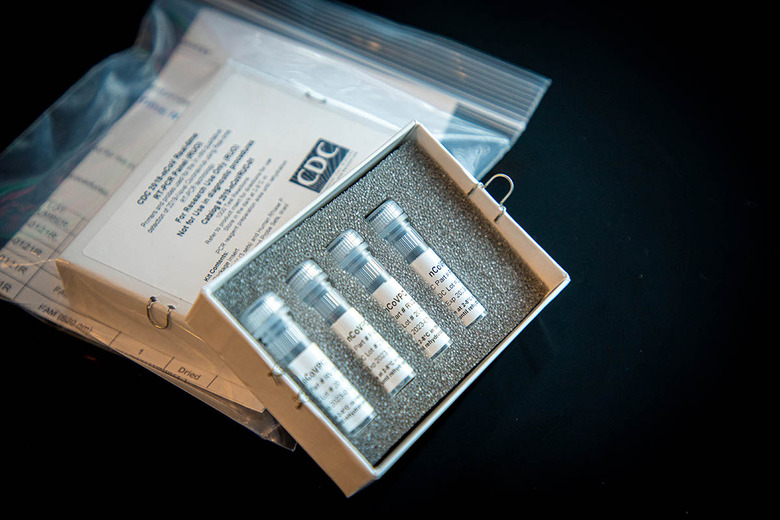The CDC Just Changed The Rules On When COVID-19 Exposed Can Go Back To Work
The CDC has eased its guidelines on employees returning to work after potentially being exposed to coronavirus, amid concerns that essential services like healthcare and food supplies could be disrupted by continued staff absences. The new instructions from the Centers for Disease Control and Prevention take a more defensive approach to tracking COVID-19 infection, though it's one which may prove controversial.
News of the new guidance came during Wednesday's White House press conference, with CDC director Dr. Robert Redfield suggesting that employees and employers could take a more symptom-led approach to quarantining.
The new interim guidance for implementing safety practices for "critical infrastructure workers" who may have had exposure to a person with suspected or confirmed COVID-19 combines monitoring with additional distancing precautions. Updated on the CDC's site, it defines "potential exposure" as either household contact with someone infected, or having close contact – within 6 feet – or someone infected. That includes any contact within a timeframe of 48 hours before symptoms may have been demonstrated.
The monitoring and containment process includes regular health checks and distancing guidelines. For example, employers should be pre-screening staff – prior to them starting work and "ideally, temperature checks should happen before the individual enters the facility," the CDC says – to track potential fevers and other symptoms. Assuming those aren't present, employees "should self-monitor under the supervision of their employer's occupational health program."

The employee should wear a face mask "at all times" for 14 days after the last exposure. They should also maintain the normal 6 feet of social distancing, "as work duties permit in the workplace." Routine cleaning of work spaces should be undertaken too, and if the employee develops symptoms they should be sent home immediately.
The shift in policy is required "to ensure continuity of operations of essential functions," the CDC says. It will allow employees to return to work sooner, "provided they remain asymptomatic and additional precautions are implemented to protect them and the community."
With tests still in short supply, asymptomatic spread is the risk
The concern among experts is that, with COVID-19 testing still relatively constrained, getting a firm idea of just how many people are actually infected with coronavirus is impossible. Symptoms among those infected can appear 48 hours after people are contagious and can be spreading the virus. However, that doesn't take into account those who don't manifest any symptoms whatsoever.

At the end of March, for example, Dr. Redfield warned that as many as a quarter of those infected with coronavirus could prove to be entirely asymptomatic. That is, they can be infected with COVID-19 but outwardly show no indication of that. Workplace checks that monitor for an increase of temperature or other coronavirus symptoms would fail to identify those employees.
Almost four weeks ago, President Trump announced that drive-thru testing for coronavirus would be implemented throughout the US, situated in the parking lots of stores such as Walmart, CVS, Target, and Walgreens. That testing is yet to be rolled out, beyond a handful of sites. Instead, federal government support for some coronavirus test sites will in fact cease on Friday, NPR reports.
As for the use of masks, an increasing number of areas are now either implementing or considering mandatory wearing of face coverings. The rules distinguish between N95 and medical face masks, supplies of which are still prioritized for healthcare workers, but instead seeks to prevent spread of infected particles between the general public.
